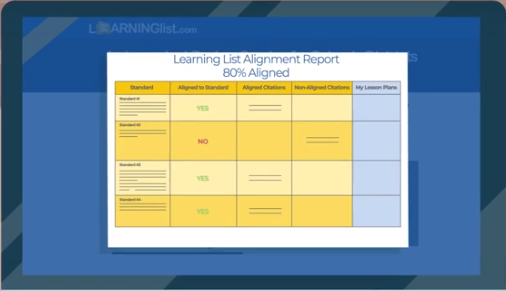When our Learning List team talks to district staff, we hear a variety of responses to the question, “How are you currently selecting resources to support Tier I intervention?” Answers range from systemic processes with district-wide solutions to teachers each selecting their own materials from multiple sources. The results of intervention are equally varied. Ensuring successful intervention requires consideration of multiple factors that can be addressed by answering the following questions:
Do the intervention materials fully address each student’s specific learning gaps?
The goal of intervention is to bridge the gap between the student’s current understanding of concepts or skill development and the required grade-level expectations. While most intervention materials provide resources for below-grade-level instruction, they may or may not fully align to the grade-level standards to which they are intended to align. Further, teachers will likely need multiple resources to address the needs of different learners as most supplemental materials are not designed to align to all grade level standards. In order to provide successful intervention, teachers must know to which standards the material does and does not align before using with students for intervention.
Are the district’s adaptive programs providing appropriate and targeted intervention?
Most adaptive programs provide a diagnostic assessment that is the basis for student choices of learning pathways within the program. In theory, this means that the learning pathway is customized to address the students’ learning gaps. However, adaptive does not mean aligned. In Learning List’s review of adaptive materials for reading and mathematics, we find that it is common for adaptive material to be aligned to less than 50% of grade-level standards. If the diagnostic assessment and the resulting learning pathways are not fully aligned to the standards where students are struggling, students are not practicing the standards they need to learn.
Are the intervention materials age- and grade-level appropriate?
Most materials intended for on-grade-level use are age and grade-level appropriate. This means that they include content that appeals to and is appropriate for the age group for which the material is intended. However, Learning List’s editorial reviews of intensive intervention materials, typically for Tier II and Tier III intervention, reveal that in their effort to address below-grade level standards and needs of students who have significant learning gaps, publishers sometimes include content or graphics that appeal to younger students.
 Learning List’s Alignment Reports provide a standard-by-standard analysis of the alignment to the standards to which the publisher claims alignment. Alignment matters because using mis-aligned materials leads to mis-aligned instruction. The aligned citations on the alignment report can be used to plan standards-based instruction by directing the teacher to portions of the material that are aligned to the standards they need to teach.
Learning List’s Alignment Reports provide a standard-by-standard analysis of the alignment to the standards to which the publisher claims alignment. Alignment matters because using mis-aligned materials leads to mis-aligned instruction. The aligned citations on the alignment report can be used to plan standards-based instruction by directing the teacher to portions of the material that are aligned to the standards they need to teach.
Learning List’s Alignment Comparison Tool enables districts to compare materials the district owns by showing which material is aligned to each standard. The Fill in the Gap Tool allows the district to add additional materials to the comparison to determine how those materials would fill the gaps of the existing materials.
Learning List’s Editorial Review provides a qualitative review of the experience of the teacher and student while using the material. This review helps districts determine if the material is appropriate for their students.
Intervention is about addressing learning gaps. Teacher’s must have access to well-aligned, age-appropriate materials in order to teach what students need to learn. As district’s continue to provide intervention for students and plan for systemic and classroom solutions, Learning List is here to help.
